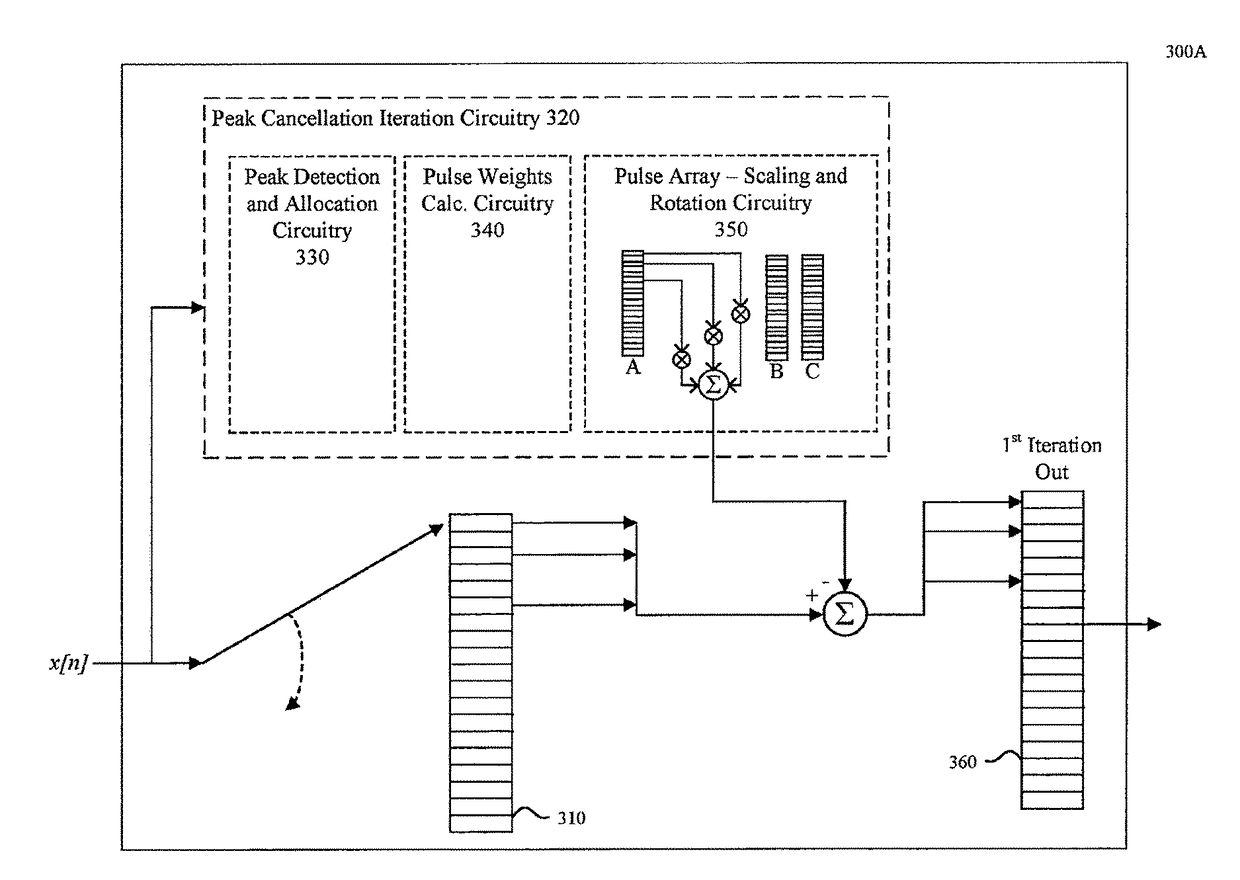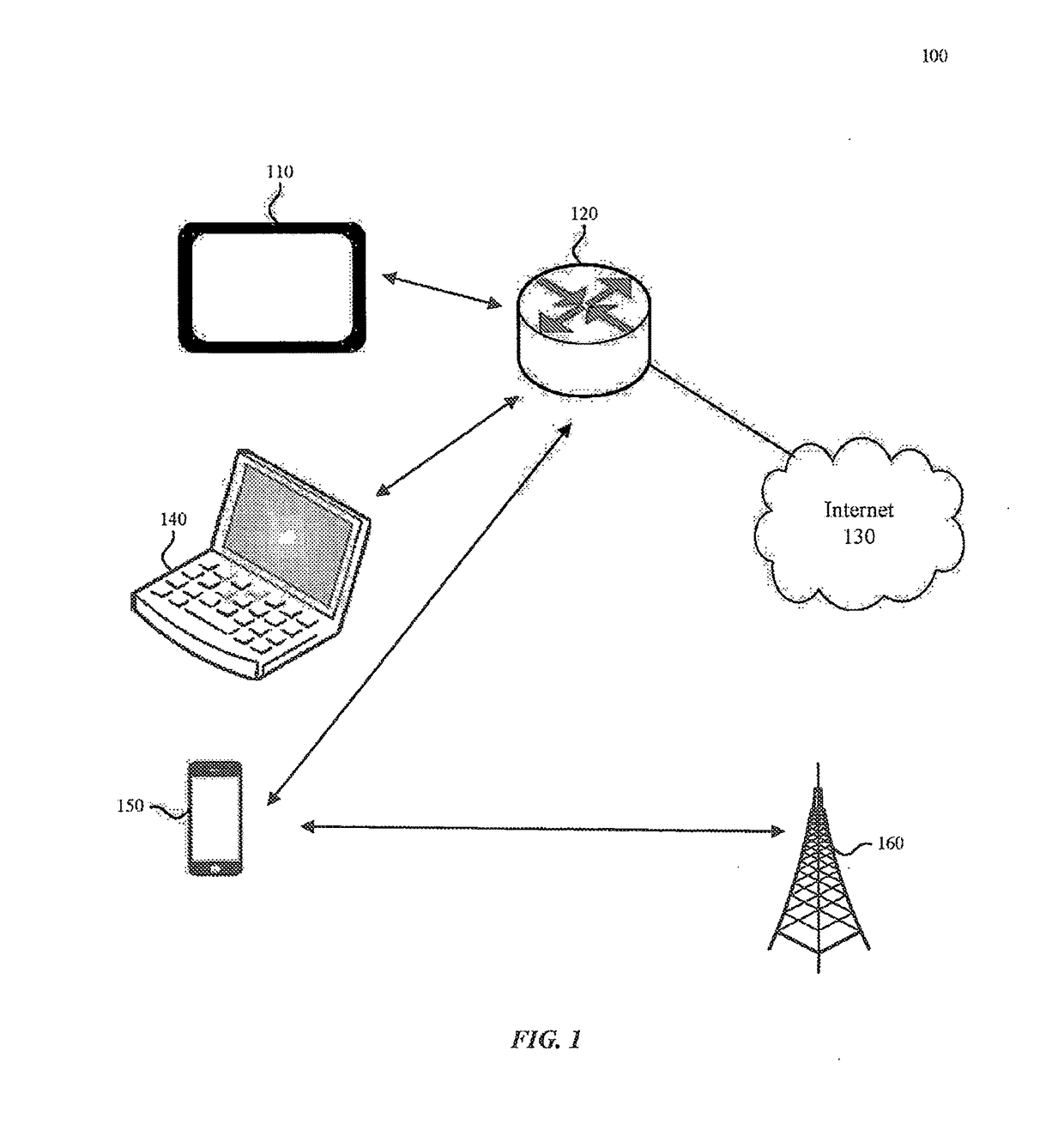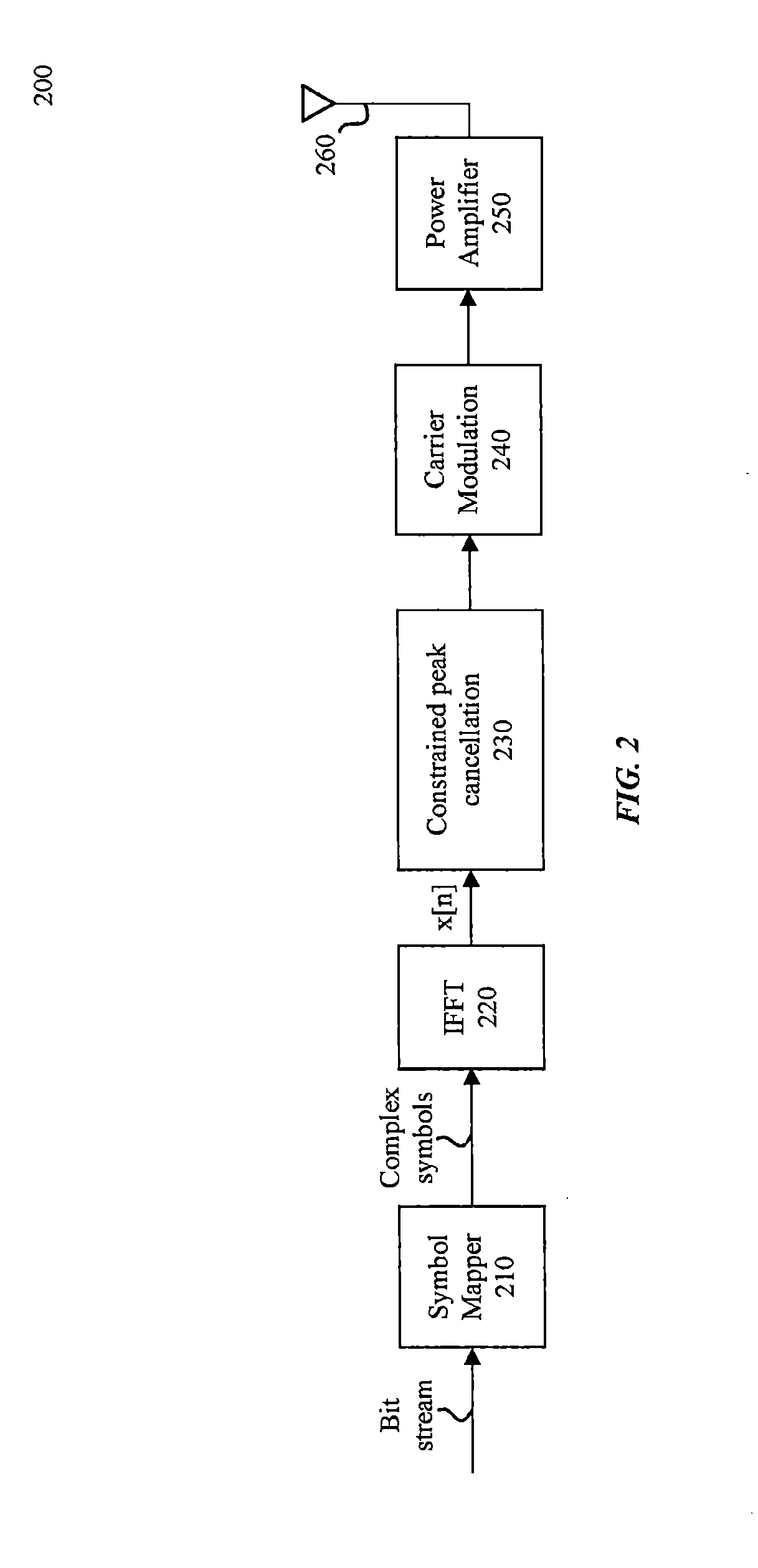System and method for constrained peak cancellation
a peak cancellation and constrained technology, applied in multi-frequency code systems, digital transmission, electrical equipment, etc., can solve the problems of linear and thus lower efficiency amplifiers to be used, and achieve the effect of reducing the peak-to-average power ratio (papr) and reducing the papr
- Summary
- Abstract
- Description
- Claims
- Application Information
AI Technical Summary
Benefits of technology
Problems solved by technology
Method used
Image
Examples
Embodiment Construction
[0014]A disadvantage of the OFDM transmission scheme is that the time-domain waveform may have a large peak-to-average power ratio (PAPR) which requires linear and consequently, inefficient amplifiers. Peak cancellation for reducing PAPR in Orthogonal Frequency Division Multiplexing (OFDM) signals has limited efficiency for a high clipping rate transmission (e.g., at small back-off transmissions) because the available subcarriers are out-of-band, while much of the clipping noise power is at frequencies of the data-carrying subcarriers. Some embodiments further described below employ data carrying subcarriers to reduce the PAPR, while controlling the induced distortion.
[0015]FIG. 1 is a diagram that illustrates an example system 100 implementing constrained peak cancellation, according to some embodiments of the disclosure. Example system 100 is provided for the purpose of illustration only and is not limiting of embodiments. System 100 may include wireless, mobile wireless and wirel...
PUM
 Login to View More
Login to View More Abstract
Description
Claims
Application Information
 Login to View More
Login to View More - R&D
- Intellectual Property
- Life Sciences
- Materials
- Tech Scout
- Unparalleled Data Quality
- Higher Quality Content
- 60% Fewer Hallucinations
Browse by: Latest US Patents, China's latest patents, Technical Efficacy Thesaurus, Application Domain, Technology Topic, Popular Technical Reports.
© 2025 PatSnap. All rights reserved.Legal|Privacy policy|Modern Slavery Act Transparency Statement|Sitemap|About US| Contact US: help@patsnap.com



